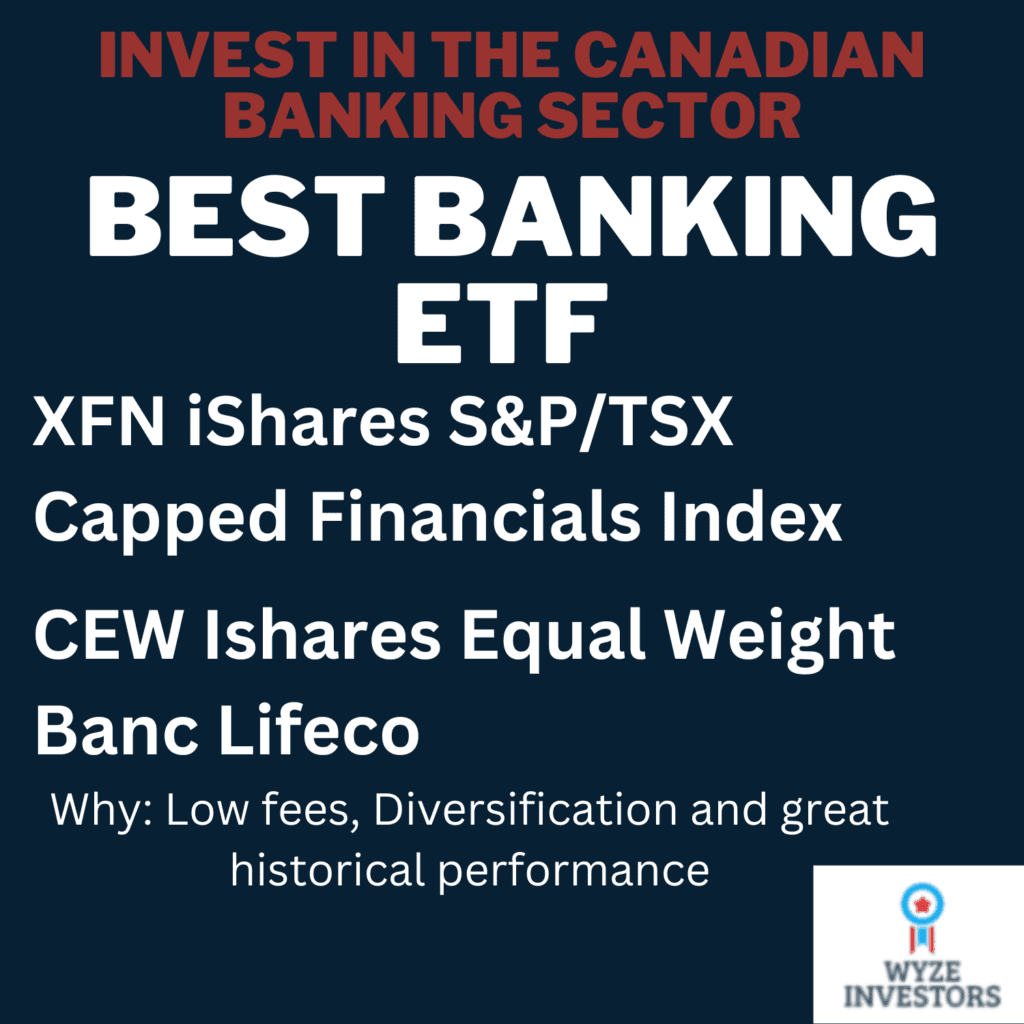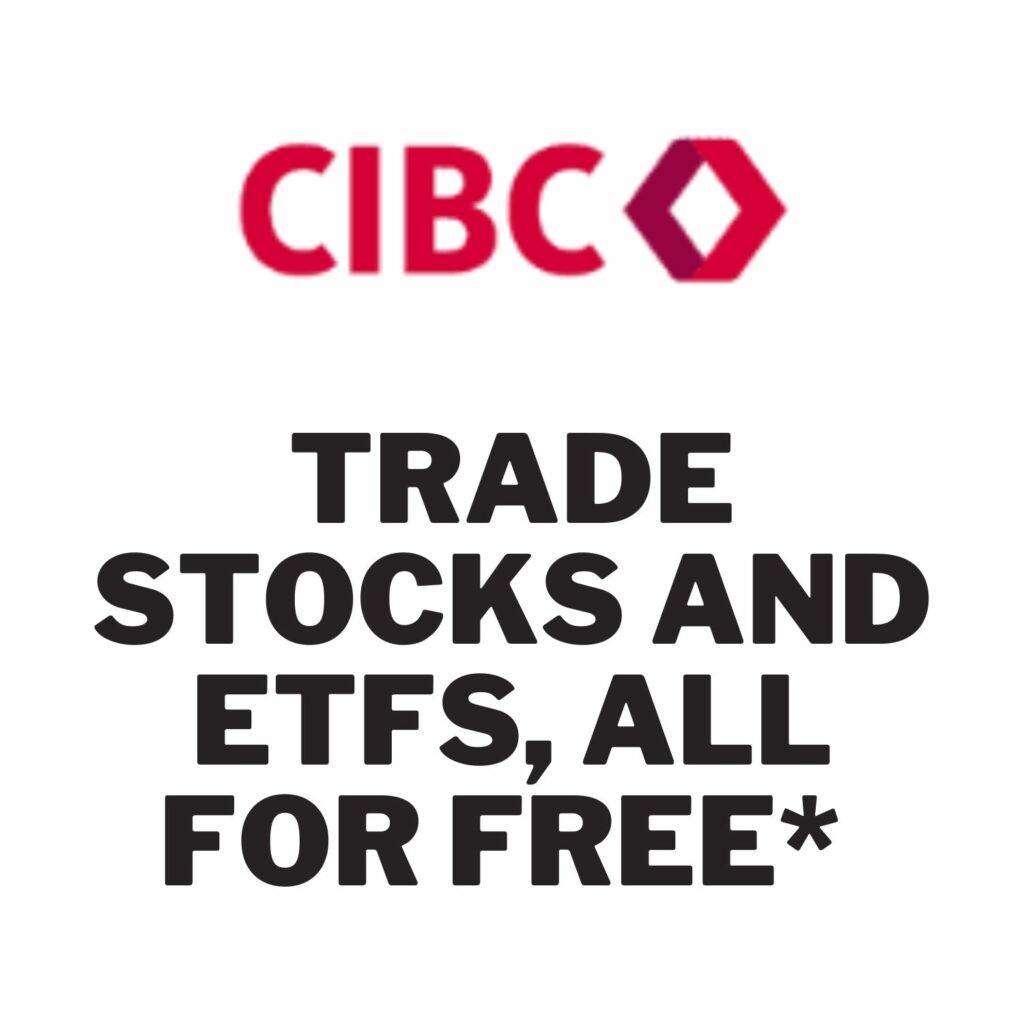In this post, we will compare popular Canadian Bank ETFs in terms of performance, MER, Dividend yield and volatility. But first, we will discuss the banking sector futur perspectives.
Executive summary

Banking sector perspectives

- How to explain the great performance of the Canadian banking sector during the pandemic?
News of faster economic growth than anticipated seem to have favored the banking sector in the past months. Large Banks benefited from:
1-Trading: revenues are soaring from an exceptional year. Retail investors were abnormally active and trading much more than usual which increased commissions’ revenues for Banks;
2-Releasing large sums of money that were held in reserves to hedge against expected loan losses due to pandemic. These losses never materialized.
- What’s next for the banking sector?
The Banking sector is poised to benefit from a tighter monetary policy. This is because rising rates will help in boosting profits for banks, insurance companies, discount brokerage firms and asset managers. The difference between short and long-term interest rates is likely to improve banks’ net interest margins.
Top 10 Best Growth ETF in Canada!
7 Best Dividend stocks to buy now (safe dividends and growth)
Best Canadian Financial ETFs: AUM, MER and Dividend yield comparison
| AUM in M | MER % | Div Yld | |
| FIE – Ishares CDN Fin Mthly Income | 978 | 0.89 | 7.07 |
| ZEB -BMO S&P TSX Equal Weight Banks Indx | 2,800 | 0.28 | 4.41 |
| ZWB –BMO Covered Call Canadian Banks | 2,700 | 0.72 | 7.46 |
| RBNK -RBC CDN Bank Yield Index | 273 | 0.33 | 4.67 |
| HCA -Hamilton Canadian Bank Mean Reversion | 551 | 0.56 | 5.42 |
| CEW -Ishares Equal Weight Banc Lifeco | 245 | 0.61 | 3.86 |
| HEWB – Horizons Eql Wght Can Banks Index | 156 | 0.33 | 0 |
| HCAL – Hamilton Can Bank 1.25X Lvrg | 365 | 1.06 | 7.40 |
| XFN –iShares S&P/TSX Capped Financials Index | 1,900 | 0.61 | 3.33 |

HCAL Hamilton Canadian Bank 1.25X Levrage ETF has the highest MER among selected ETFs. Considering that one can easily replicate the portfolio held by most of the ETFs above, it’s wise to choose ETFs that charge minimal fees. ZEB has the lowest MER at only 0.28.
The ETFs above have different strategies that can be summrized below:
Equal weight
An equally weighted portfolio of ETFs is a type of investment portfolio in which all the securities in the portfolio are given the same weight or allocation, regardless of their market capitalization or other factors.
Leverage
A leveraged ETF is an exchange-traded fund (ETF) that seeks to deliver multiples of the daily or intra-day return of an underlying index or asset. Leveraged ETFs typically use financial derivatives such as futures, options, and swaps to achieve their leverage. HCAL uses for instance 1.25 leverage. A 1.25 leverage ETF is an exchange-traded fund (ETF) that aims to provide 125% of the daily return of the underlying index or asset that it tracks.;
Active
An active ETF is an exchange-traded fund (ETF) that is managed by an investment manager who aims to outperform the market or achieve a specific investment objective. Unlike passive ETFs, which track a particular index or benchmark, active ETFs use a variety of investment strategies such as fundamental analysis, quantitative analysis, and technical analysis to make investment decisions and attempt to generate alpha (excess returns) compared to the market.
Passive
mainly XFN, which replicates the S&P/TSX Capped Financials Index. A passive ETF is an exchange-traded fund (ETF) that seeks to track the performance of a specific index or benchmark. Passive ETFs typically hold the same securities as the underlying index or benchmark, in the same proportions as the index or benchmark. They aim to provide investors with exposure to a diversified portfolio of securities at a low cost.
Best Canadian Financial ETFs: Performance comparison
[stock_market_widget type=”table-quotes” template=”color-text” color=”#5679FF” assets=”FIE.TO,ZEB.TO,ZWB.TO,RBNK.TO,HCA.TO,CEW.TO,HEWB.TO,HCAL.TO,XFN.TO” fields=”symbol,ytd_return,three_year_average_return,five_year_average_return” links=”{‘FIE.TO’:{},’ZEB.TO’:{},’ZWB.TO’:{},’RBNK.TO’:{},’HCA.TO’:{},’CEW.TO’:{},’HEWB.TO’:{},’HCAL.TO’:{},’XFN.TO’:{}}” display_header=”true” display_chart=”false” display_currency_symbol=”true” pagination=”true” search=”false” rows_per_page=”10″ sort_field=”five_year_average_return” sort_direction=”desc” alignment=”left” api=”yf”]
Updated daily
Based on historical performance alone, the ZEB -BMO S&P TSX Equal Weight Banks ETF had the second best performance in the last 5 years. Additionally, the fund pays a dividend yield of around 4%. The management expense ratio is 0.28%, the lowest on our list. ZEB invests in the 6 largest Canadian banks equally.
Another competitor to ZEB is the RBNK – RBC CDN Bank Yield Index fund. This fund is newer and has had the best performance over 5 years. This fund also benefits from a very competitive management fee of 0.33%. The RBNK manager favors in its investment strategy the 2 Canadian banks that offer the highest rate of return (with an allocation of 25% each), followed by the banks that offer the lowest rate of return.
HEWB had the best performance year-to-date and over 3 years. However, this fund does not pay dividends. HEWB is similar to ZEB. Indeed, the fund holds equally the main Canadian banks.
CEW Ishares Equal Weight Banc Lifeco and XFN iShares S&P/TSX Capped Financials Index are also good choices based on long-term performance. Both pay a dividend yield of around 4%.
For those looking for high dividend income, FIE Ishares CDN Fin Mthly Income offers an attractive dividend yield of over 6%. This fund invests about 80% of these holdings in bank stocks and the rest in a preferred stock ETF. HCAL – Hamilton Can Bank 1.25X Lvrg and HCA – Hamilton Canadian Bank Mean Reversion are also good alternatives. The only downside with his funds is the relatively high management fees. For FIE, the long-term return is low compared to other funds.
ZWB – BMO Covered Call Canadian Banks is ideal for investors who want to earn high dividends and lower their risk at the same time. ZWB is what is known as a covered call option writing fund. This type of fund has two purposes:
1- reduce the risk (volatility) of the portfolio by selling covered call options;
2- improve the dividend yield with the premiums earned following the issuance of covered call options.
The major disadvantage of this strategy is that the performance will be lower.
Best dividend stocks to buy – Dividend aristocrats 2023
Best US Dividend ETFs in Canada (2023)!
FIE – Ishares CDN Fin Monthly Income
Ishares CDN Fin Monthly Income seeks to maximize total return and to provide a stable stream of monthly cash distributions. FIE has a high exposure to the financial sector.
FIE Morningstar rating
FIE Dividend ETF holdings
| Company Name | Allocation |
|---|---|
| iShares S&P/TSX Cdn Prefr Shr ETF Comm | 21.1% |
| iShares Core Canadian Corporate Bd ETF | 10.3% |
| Canadian Imperial Bank of Commerce | 8.5% |
| Royal Bank of Canada | 8.2% |
| The Toronto-Dominion Bank | 6.7% |
| National Bank of Canada | 6.5% |
| Manulife Financial Corp | 6.4% |
| Power Corporation of Canada | 6.0% |
As of October 29th
Sector allocation
| Type | Fund |
| Banks | 44.96 |
| Insurance | 30.24 |
| Diversified Financials | 8.48 |
| Energy | 5.01 |
| Utilities | 4.50 |
| Real Estate | 2.81 |
| Telecommunications | 1.12 |
| Transportation | 0.73 |
| Food & Staples Retailing | 0.57 |
| Cash and/or Derivatives | 0.41 |
Please consult issuers’ website for up-to-date figures
ZEB – BMO S&P TSX Equal Weight Banks Index ETF
The BMO Equal Weight Banks ETF has been designed to replicate, to the extent possible, the performance of the Solactive Equal Weight Canada Banks Index, net of expenses. The index includes the major Canadian banks with a balanced allocation as you can see in the composition of the portfolio below.

Holding details
| Weight (%) | Name |
| 17,18% | BANK OF MONTREAL |
| 16,90% | TORONTO-DOMINION BANK/THE |
| 16,78% | CANADIAN IMPERIAL BANK OF COMMERCE |
| 16,59% | NATIONAL BANK OF CANADA |
| 16,50% | ROYAL BANK OF CANADA |
| 15,86% | BANK OF NOVA SCOTIA/THE |
| 0,19% | CASH |
Please consult issuers’ website for up-to-date data
ZWB – BMO Covered Call Canadian Banks
The ZWB aims to provide exposure to a portfolio of dividend-paying securities (Canadian Banks), while collecting premiums related to call options. The portfolio is chosen on the basis of the criteria below:
• dividend growth rate,
• yield
• payout ratio and liquidity.
ZWB Morningstar rating
ZWB holdings
| Name | Weight |
| BMO Equal Weight Banks ETF | 27.2% |
| Bank of Montreal | 12.9% |
| Canadian Imperial Bank of Commerce | 12.7% |
| Royal Bank of Canada | 12.1% |
| National Bank of Canada | 11.9% |
| The Toronto-Dominion Bank | 11.9% |
| Bank of Nova Scotia | 11.4% |
Please visit issuers’ website for up-to-date figures
RBNK – RBC CDN Bank Yield Index
RBC Canadian Bank Yield Index ETF seeks to replicate the Solactive Canada Bank Yield Index. The latter is focused only on the Canadian banking industry.
RBNK Morningstar rating
RBNK Holdings
| Holdings | Assets |
|---|---|
| CANADIAN IMPERIAL BANK OF COMMERCE | 26.7% |
| BANK OF NOVA SCOTIA | 23.7% |
| ROYAL BANK OF CANADA | 17.1% |
| TORONTO-DOMINION BANK | 15.6% |
| BANK OF MONTREAL | 8.5% |
| NATIONAL BANK OF CANADA | 8.4% |
Please consult issuers’ website for up-to-date data
HCA – Hamilton Canadian Bank Mean Reversion
HCA invests in the 6 largest Canadian banks. This fund differentiates itself by its investment strategy, called “Mean reversion”.
The strategy is applied as follows:
80% of the portfolio in the 3 banks that performed the least well among the 6 largest Canadian banks;
20% remaining in the 3 banks which outperformed.
HCA holdings
As of December 31st
| NAME | Weight |
| Bank of Nova Scotia | 27.9% |
| Toronto-Dominion Bank | 27.1% |
| Royal Bank of Canada | 26.4% |
| Bank of Montreal | 6.4% |
| Canadian Imperial Bank of Commerce | 6.2% |
| National Bank of Canada | 6.0% |
CEW -Ishares Equal Weight Banc Lifeco
CEW Invests in a portfolio of common shares of Canada’s largest banks and life insurance companies.
CEW Morningstar rating
CEW Holdings
| NAME | Weight % |
|---|---|
| GREAT WEST LIFECO INC | 10,16 |
| IA FINANCIAL INC | 10,12 |
| TORONTO DOMINION | 10,06 |
| NATIONAL BANK OF CANADA | 10,05 |
| MANULIFE FINANCIAL CORP | 10,00 |
| BANK OF NOVA SCOTIA | 9,92 |
| SUN LIFE FINANCIAL INC | 9,90 |
| BANK OF MONTREAL | 9,86 |
| CANADIAN IMPERIAL BANK OF COMMERCE | 9,78 |
| ROYAL BANK OF CANADA | 9,70 |
HEWB – Horizons Eql Wght Can Banks Index
The Horizons Equal Weight Canada Banks Index ETF (“HEWB”) seeks to replicate the performance of the Solactive Equal Weight Canada Banks Index. The Index is an equal-weight index of equity securities of six Canadian banks.
HEWB Morningstar rating
HEWB Holdings
| Security Name | Weight |
|---|---|
| TORONTO-DOMINION BANK | 17.17% |
| BANK OF NOVA SCOTIA | 16.82% |
| NATIONAL BANK OF CANADA | 16.77% |
| BANK OF MONTREAL | 16.65% |
| ROYAL BANK OF CANADA | 16.37% |
| CANADIAN IMPERIAL BANK OF COMMERCE | 16.23% |
Please consult issuers’ website for up-to-date data
HCAL – Hamilton Canadian Bank 1.25X Lvrg
Hamilton Enhanced Canadian Bank ETF aims to provide investors with a unique way to participate in the performance of the Canadian banking sector. It’s designed to track 1.25 times the returns of the Solactive Equal Weight Canada Banks Index. Essentially, for every 1% increase (or decrease) in the index, HCAL aims to increase (or decrease) by 1.25%. It achieves this by investing directly in Canadian banks and employing a modest 25% cash leverage. Unlike some other funds, HCAL does not use derivatives.
As at December 29, 2023
| TICKER | NAME | WEIGHT |
| HEB | Hamilton Canadian Bank Equal-Weight Index ETF | 125.1% |
Leverage is via cash borrowing (not derivatives), provided by a Canadian financial institution.
HEB HOLDINGS
Hamilton Canadian Bank Equal-Weight Index ETF invests in Canada’s “big six” banks
| NAME | WEIGHT |
|---|---|
| Canadian Imperial Bank of Commerce | 18.1% |
| Bank of Montreal | 17.3% |
| Royal Bank of Canada | 16.7% |
| National Bank of Canada | 16.6% |
| Toronto-Dominion Bank | 16.0% |
| Bank of Nova Scotia | 15.3% |
Please consult issuers’ website for up-to-date data
XFN -iShares S&P/TSX Capped Financials Index
This is a passive strategy ETF. It replicates the performance of the S&P/TSX Capped Financials Index, net of expenses.
XFN Holdings
| Name | Weight % |
|---|---|
| ROYAL BANK OF CANADA | 19.38 |
| TORONTO DOMINION | 18.36 |
| BANK OF NOVA SCOTIA | 10.58 |
| BROOKFIELD ASSET MANAGEMENT INC CL | 10.36 |
| BANK OF MONTREAL | 9.18 |
| CANADIAN IMPERIAL BANK OF COMMERCE | 6.87 |
| MANULIFE FINANCIAL CORP | 5.06 |
| SUN LIFE FINANCIAL INC | 3.81 |
| NATIONAL BANK OF CANADA | 3.26 |
| INTACT FINANCIAL CORP | 3.04 |


